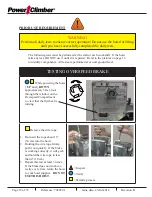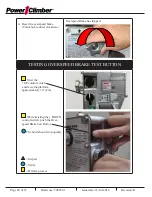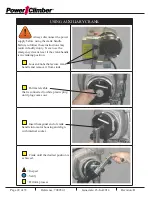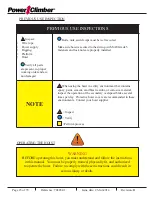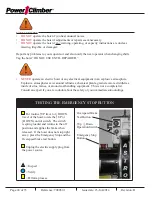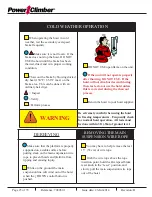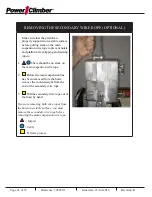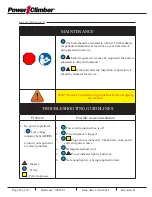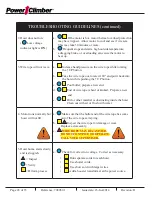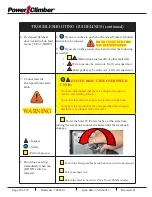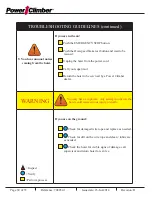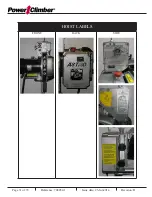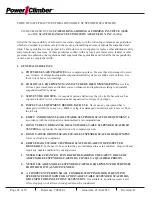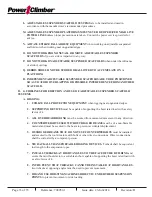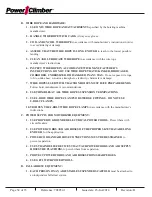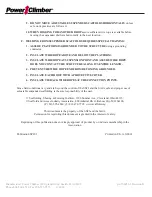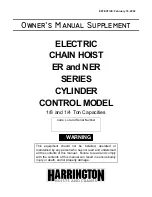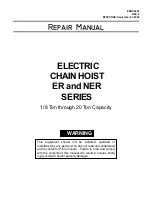
Page 33 of 35
Reference: 708052-1
Issue date: 23-Jul-2014
Revision: B
L. ADJUSTABLE SUSPENDED SCAFFOLD SYSTEMS
are to be installed and used in
accordance with the manufacturer’s recommended procedures.
M. ADJUSTABLE SUSPENDED PLATFORMS MUST NEVER BE OPERATED NEAR LIVE
POWER LINES
unless proper precautions are taken. Contact the power service provider for
advice.
N. ALWAYS UTILIZE FALL ARREST EQUIPMENT
when working on adjustable suspended
scaffolds or when working near unguarded edges.
O. DO NOT WORK FROM, INSTALL OR MOVE ADJUSTABLE SUSPENDED
SCAFFOLDS
if you are sick or impaired in any way.
P. DO NOT WORK ON ADJUSTABLE SUSPENDED SCAFFOLDS
when under the influence
of alcohol or drugs.
Q. DEBRIS SHOULD NOT BE STORED OR ALLOWED TO ACCUMULATE ON A
PLATFORM.
R. INDEPENDENT ADJUSTABLE SUSPENDED SCAFFOLDS ARE TO BE POSITIONED
SO AS TO AVOID OVERLAPPING OR POSSIBLE INTERFERENCE FROM ANOTHER
SCAFFOLD.
II. GUIDELINES FOR ERECTION AND USE OF ADJUSTABLE SUSPENDED SCAFFOLD
SYSTEMS
A. RIGGING:
1. UTILIZE FALL PROTECTION EQUIPMENT
when rigging near unguarded edges.
2. SUPPORTING DEVICES
must be capable of supporting the hoist rated load with a safety
factor of 4.
3. ALL OVERHEAD RIGGING
must be secured from unwanted movement in any direction.
4. COUNTERWEIGHTS USED WITH OUTRIGGER BEAMS
must be of a non-flowable
material and must be secured to the beam to prevent accidental displacement.
5. OUTRIGGER BEAMS THAT DO NOT USE COUNTERWEIGHTS
must be installed
and secured to the roof structure with bolts or other direct connections. Direct connections
shall be evaluated by a competent person.
6. TIE BACK ALL TRANSPORTABLE RIGGING DEVICES.
Tieback shall be equivalent
in strength to the suspension ropes.
7. INSTALL TIEBACKS AT RIGHT ANGLES TO THE FACE OF THE BUILDING
and
secure them without slack, to a suitable anchor capable of supporting the hoist rated load with
a safety factor of 4.
8. IN THE EVENT THAT TIEBACKS CANNOT BE INSTALLED AT RIGHT ANGLES,
two tiebacks at opposing angles must be used to prevent movement.
9. RIG AND USE HOISTING MACHINES DIRECTLY UNDER THEIR SUSPENSION
POINTS
to prevent movement or side loading.

